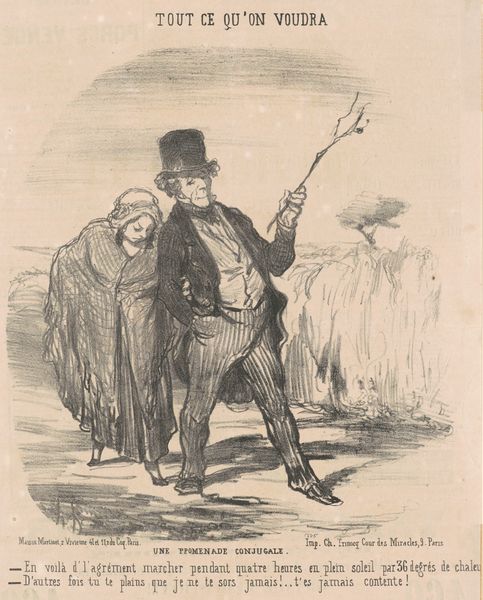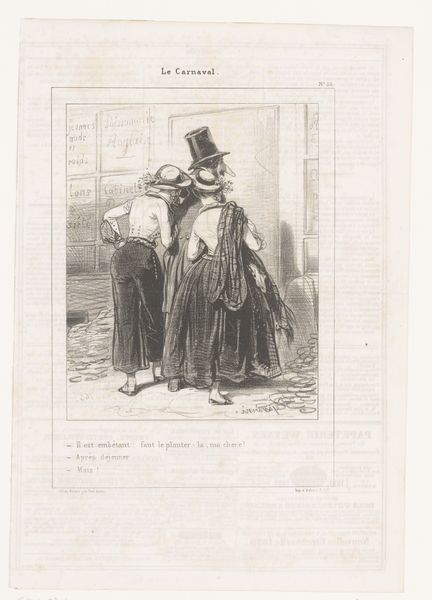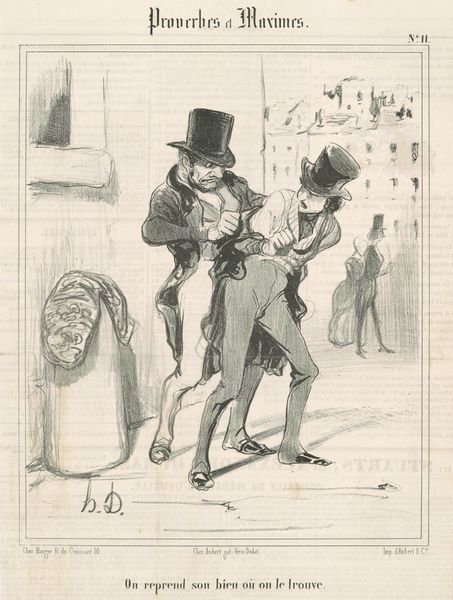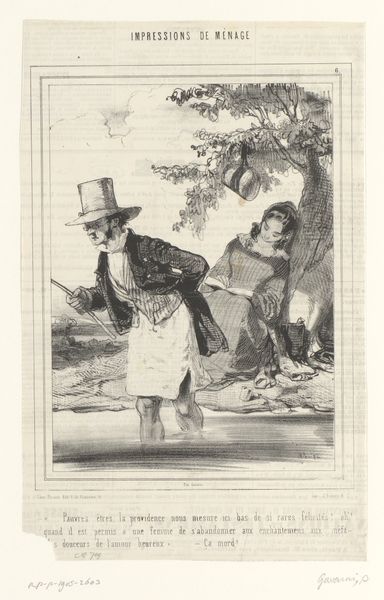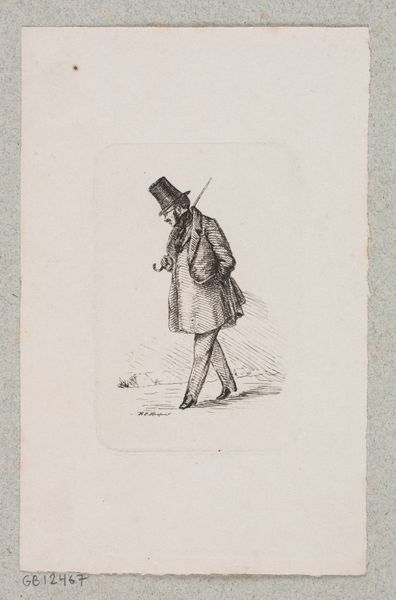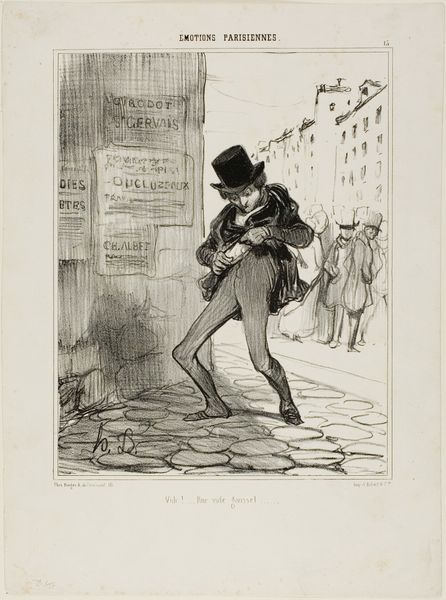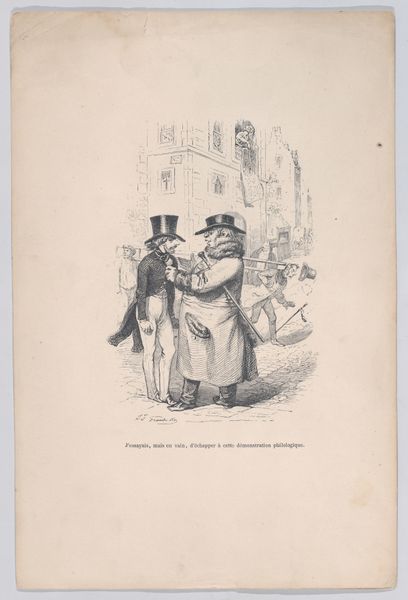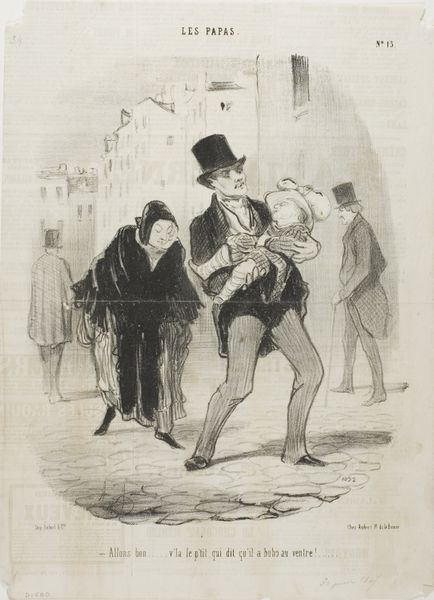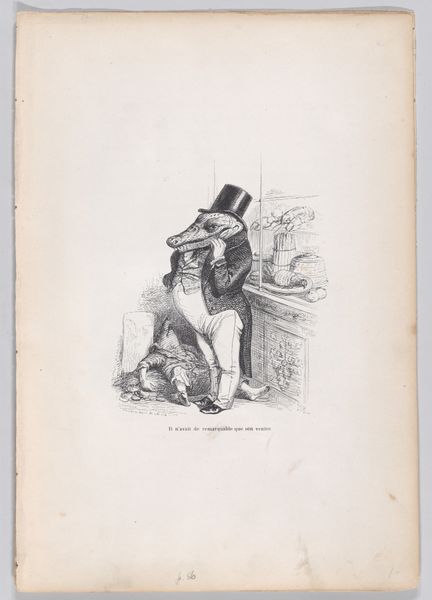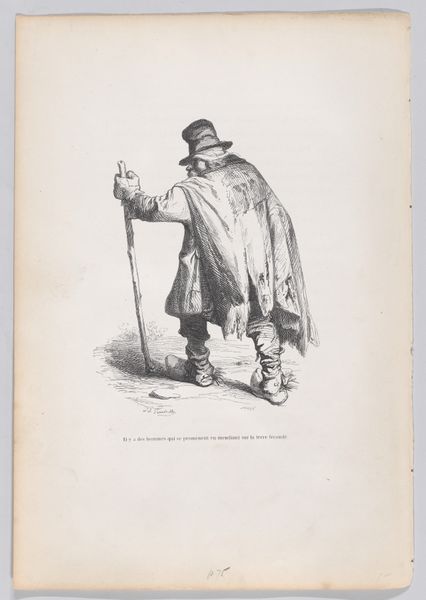
drawing, pencil
#
portrait
#
drawing
#
aged paper
#
light pencil work
#
caricature
#
pencil sketch
#
sketch book
#
personal journal design
#
figuration
#
personal sketchbook
#
sketchwork
#
pencil
#
symbolism
#
sketchbook drawing
#
storyboard and sketchbook work
#
sketchbook art
Dimensions: height 403 mm, width 288 mm
Copyright: Rijks Museum: Open Domain
Editor: Here we have "Man met hoge hoed bedekt de ogen van een andere man," or "Man in a Top Hat Covers the Eyes of Another Man," a pencil drawing by Hermann-Paul from 1899. It feels rather ominous, like a secret being forcefully kept. What do you make of this drawing? Curator: This seemingly simple sketch touches upon complex social dynamics of the time. Consider the fin-de-siècle context: anxieties about societal decay, the rise of the bourgeoisie, and power structures becoming increasingly opaque. The act of covering the eyes, the enforced blindness, could represent a deliberate silencing, perhaps reflective of censorship or the suppression of dissent. What does the relationship between the two figures suggest to you, especially given the era? Editor: I see a clear power dynamic. The man in the top hat, a symbol of the upper class, literally controls the other's field of vision. Is it fair to consider how economic status is displayed to communicate an imbalance of power? Curator: Absolutely. Hermann-Paul frequently critiqued the bourgeois through caricature. The top hat isn’t just fashion; it's a signifier of class privilege and potentially, the abuse of that privilege. Does the vulnerability of the figure whose eyes are covered prompt any thoughts about the broader social injustices of the era? Editor: It makes me think about how easy it is for those in power to keep others in the dark, both literally and figuratively, obscuring truths and manipulating perceptions. This image also really captures the restriction of information and control, perhaps something still relevant today. Curator: Indeed, its enduring power resides in its ability to speak to the ongoing struggles against oppression and the fight for visibility. I wonder what implications the location in Rijksmuseum bring to light, since the topic of Dutch colonization can be inferred from such artworks of the time. Editor: I’ll definitely be thinking about this drawing differently now, considering the artist's social commentary and how it resonates even today. Thank you for sharing this viewpoint.
Comments
No comments
Be the first to comment and join the conversation on the ultimate creative platform.
